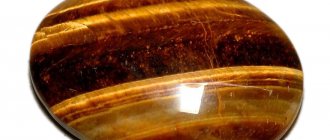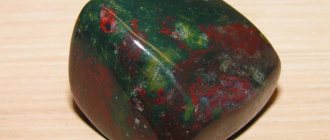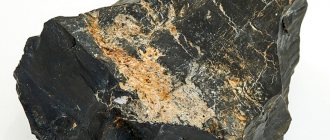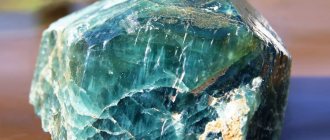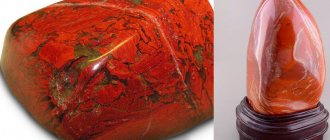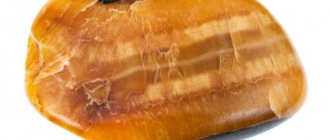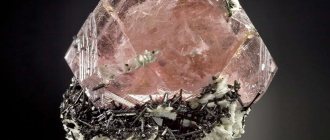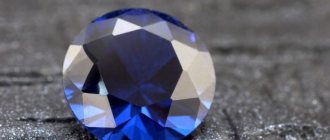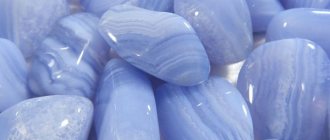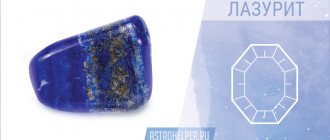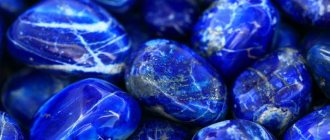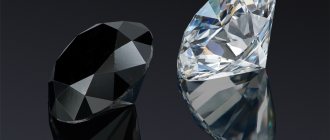Lapis lazuli stone properties lapis photo jewelry who suits the meaning color magical properties blue mineral zodiac sign application
The English name of the mineral is Lazurite
Lapis lazuli is generally a very interesting stone for history. Its findings make it possible to reconstruct trade routes and judge from them the mutual connections of ancient peoples. Lapis lazuli was used at the earliest stages of human history; to confirm this, one can refer to many museum exhibits in our and foreign museums.
Synonyms: Azure (azure) stone - lasurstein (German), pierr d'azuz (French); lapis lazuli (lapis lazuli) - lapis-lazuli (lazule) (English), lapis-lazzuli (Italian); sapphire (sappheiros) - sapphirus and kyanos (kyanos) - cyaneus (ancient Greek); chesbet - chesbet (Egyptian); chrysosapphire - chrysosapphire; Lajward - lajward (Ind.), arminakun (Armenian stone) - armenakun (Armenian) (armeniurh stone - Lat.), ultramarine - ultramarine (Lat.). Sodalite group
origin of name
The name comes from the Arabic “azul” or the Persian “lazvard” - blue sky. Known since ancient times, mentioned more than 4000 years ago; Boetis was first described in detail by Boetis de Boot in 1636 as “lapide-lazulli” - azure stone (the name refers not to the mineral, but to the lapis lazuli-containing rock). It was described as an independent mineral by Fischer in 1869.
LazLazurite. Irkutsk region. R. Fast
Story
Lapis lazuli got its name from its color; lapis literally means stone. That is why it was previously called nothing more than “heavenly”. In addition, many peoples attributed mystical properties to it. Thus, the Hindus believed that with the help of lapis lazuli they could cleanse the aura and get rid of anxiety.
Not the least place was occupied by lapis lazuli in the beliefs of Europeans. They believed that a person who had jewelry with this stone could quickly achieve his goals and make all his dreams come true.
In the fifth to first centuries BC it was called sapphire . Its modern name appeared much later, already in the eighteenth century. At this time, this stone was widespread in Mesopotamia, ancient Egypt, Asian countries, Rome and Greece, where various jewelry, amulets, and figurines were carved from it.
It was also known in ancient Rus', as evidenced by the magnificent vases and tabletops made of lapis lazuli, which are kept in the Hermitage and date back to the eighteenth and nineteenth centuries. It was especially common in ancient Egypt and Mesopotamia, where for its dark, rich blue color it was considered the stone of the sky and was sacred. It was woven into clothing, made into jewelry for clergy and kings, and also decorated with some interior details.
The name of the stone contains two words: Arabic and Persian. From Arabic "azul" means blue, and from Persian "lazurite" means blue. The second name of the stone “lapis lazuli” from Latin is azure stone .
Lapis, what is it in chemistry. Pharmacology
Pharmacological action - anti-inflammatory, bactericidal, antiseptic, astringent, cauterizing, antimicrobial.
Binds sulfhydryl and carboxyl groups, which can cause a change in protein conformation, its structure, or cause denaturation. When silver nitrate dissociates, silver ions cause precipitation of proteins and cause a bactericidal effect. Silver albuminate, formed by the interaction of silver nitrate with tissue proteins, gradually acquires a black color (this is due to the reduction of metallic silver from albuminate), which, in turn, leads to interaction with active groups of enzymes. Blocks some enzyme systems, thereby disrupting metabolic processes in the microbial cell. In this regard, silver nitrate, after a short-term bactericidal effect, has a long-term bacteriostatic effect. Silver nitrate at a dilution of 1:1000 destroys most microorganisms.
At low concentrations of silver ions, precipitation is limited to interstitial proteins and an astringent as well as anti-inflammatory effect is manifested. In high concentrations, silver ions cause damage to membranes and intracellular structures, having a cauterizing effect (loose albuminates are formed).
Previously, silver nitrate was used for chronic gastritis and peptic ulcers of the stomach and duodenum (orally, in the form of a 0.05% solution). A solution (2%) can be used to prevent gonococcal eye infections in newborns.
Production
The most ancient place for the extraction of lapis lazuli is the Badakhshan deposit in Afghanistan. About six thousand years ago this beautiful stone began to be mined there and from there it began to spread throughout Asia and to Egypt, and from there it was exported to all other countries. To this day, the stones mined in this deposit are considered the purest and of the highest quality; in addition to all these stones, there are inclusions of golden pyrite , which makes it very beautiful and similar to the evening sky.
Archaeologists have found a lot of evidence that it was Badakhshan lapis lazuli that was worn by the pharaohs, and for a long time it was the only deposit of lapis lazuli on the planet.
The ground gemstone was used to make ultramarine paint, which was very often used when painting icons. This paint lasted a very long time and did not fade in the sun. Later lapis lazuli was replaced by other dyes. There are rumors that a kilogram of lapis lazuli from the Badakhshan deposit costs more than a thousand dollars .
At the end of the eighteenth century, lapis lazuli began to be mined near Lake Baikal, although there is documented evidence that it was found there already in the sixteenth century. Perhaps the reason why this deposit has not been developed for so long is the priority given to fishing and forestry in these parts. And only when the relevance of these areas decreased somewhat did they begin to develop the mining of Baikal lapis lazuli. But the quality and price of stone from these places is not too high, since it contains large layers of calcite, which is white.
At the beginning of the twentieth century, a new deposit appeared in Tajikistan, but for a very long time it was protected by local residents, who considered this place sacred and protected it from destruction. They believed that this could anger higher powers and offend the gods . This lapis lazuli is also of high quality and is prized throughout the world.
In addition to the above deposits, lapis lazuli is mined in the USA, Chile, Canada and Myanmar. But local azurite has too many impurities, which significantly affects the quality and price.
To process lapis lazuli, I use a circular saw made of diamond chips , saw off the required pieces and then cool them in soapy water, oil or kerosene. Next, they are placed in carborundum abrasive wheels for roughing, then faceted, cooled with water and final polished.
Chemical composition
In terms of chemical composition, all structural modifications are close to each other. The ratio Si : Al = 1 : 1, among the cations Na and Ca predominate, and the anion part is sulfate and sulfide sulfur, in much smaller quantities - Cl, OH, CO4 2-, very rarely F. Spectral analysis found in this mineral from the Carpathians the following trace elements (%): Ba - 0.6; Sr - 0.2; Zr - 0.006; Mo - 0.0006; Be - 0.0003, Ga and Cu - 0.0001; Pb, Li, Y, La, Nb, Ni, Co - traces.
Varieties of lapis lazuli
Structural: triclinic, monoclinic, orthorhombic.
Jewelry: nili - nili - deep blue; asmani - asmani - indigo, sky blue; sebciy (sufei) - sebsi (suvsi) - green-blue.
Crystallographic characteristics
Cubic system
Symmetry class. Hexatetrahedral
Crystal structure
The identified structural varieties are similar in chemical composition, indistinguishable macroscopically and in paragenetic associations, but differ in optical properties, size and symmetry of the unit cell, and modulations of crystal structures. Cubic lapis lazuli is characterized by a three-dimensional incommensurate modulated structure, in which the period of modulation is not a multiple of the period of the subcell; rhombic, triclinic and monoclinic - proportionally modulated structures, which causes the appearance of additional superstructural reflections around the reflections of a cubic cell in the diffraction patterns. Two types of superstructures have been established in relation to the axes of the cubic subcell: close to fourfold and sixfold. The structure was deciphered in 1929 by Jaeger using a sample of artificial ultramarine. Subsequently, it was repeatedly clarified and detailed.
The basis of the idealized structure is a sodalite-type framework, in the voids of which S2- and SO4 2- are located in a tetrahedral environment of Na and Ca, forming [Na2CaS]3+ and [Na3CaSO4]3+ clusters. It is assumed that part of the sulfur replaces oxygen in the frame.
In the real structure in the framework, the thermal parameters of Si and Al are greater than those in sodalite. This causes them to shift in the frame. The oxygen atoms are statistically disordered at two positions 24(i), which determines the presence in the framework of two fragments with left and right rotation. Na and Ca are located in three positions. It is assumed that some of the sulfur may enter the cavity in the form of clusters. Crystal chemical formula Na6Ca2[Al6Si6O24](SO4)1.4 S0.6. The framework of the rhombic modification is characterized by complete ordering of the Si and Al tetrahedra. The cell along the z axis is divided into two parts, differing in the pairwise rotation of the tetrahedra. In each part, diortho groups of the same orientation differ in the rotation angle, which leads to tripling of the period c. These rotations are a consequence of the regular displacement of Al and Si atoms along the x and y axes from the average positions of the cubic cell. Modulation of the tetrahedral framework determines a natural change in the shape of cuboctahedra - cavities formed by the oxygen of the framework, causing the displacement of extra-framework Ca and Na atoms. The coordination of all large cations includes oxygen vertices of S-tetrahedra and sulfide sulfur atoms. The latter form the [S2 2-] group and the [S3 2-] corner group. Crystal chemical formula (Z = 6) (Na6.51Ca1.33 K0.06)[Si6.l7Al5.83O24][SO4]1.3 S0.29(S2)0.11Cl0.1.
The framework of the triclinic modification differs from the cubic modification by changing the ideal motif through the joint rotation of the tetrahedra around the axes of the cubic cell. The frame is divided along the z axis into two equal parts, the tetrahedrons in which differ from each other in the type of rotation. Reversals are formed as a result of pairwise rotation of tetrahedra (by synchronous diortho groups) in opposite directions around the z and y axes for the first and second parts, respectively. The displacement of tetrahedra from the middle sodalite positions occurs according to a periodic law, the nature of the deviation is determined by the direction of the crystallographic axes. Compared to the sodalite framework, the tetrahedra are shifted in a wave-like manner from particular positions. Along the [010] and [001] directions in the structure, periodic compression and expansion of fragments of the sodalite framework are observed, and along [100] corrugated ribbons are formed. SO4 groups occupy six of the eight cavities, each SO4 tetrahedron is rotated approximately 90° around one of the two diagonals of the cubic subcell face, coinciding in direction with the x and z axes of triclinic lapis lazuli, and the central cations S(l) and S(6) are displaced from centers of cavities. The two cavities contain S2 or H2S molecules. The S(7)-S(10) ions are not included in the coordination of Na atoms.
Na and Ca cations occupy different positions. The cell contains two [Na3CaSO4]3+ clusters with centers in S(3) and S(6) and four [Na5.5Ca0.5SO4]4.5+ clusters with centers in S(l), S(2), S( 4) and S(5). Crystal chemical formula (Na7Ca)[Al6Si6O24](SO4)1.5(H2S2)0.30. The main factors determining the phase transformations of lapis lazuli are the activity of sulfur dioxide in the gas phase and temperature.
Properties of the stone
Lapis lazuli has the following characteristics.
- Its color can be blue, blue-green, red-violet . The most expensive representatives are blue, blue-violet and blue stones. The more uniform the color (less shimmer), the more valuable the stone is considered.
- The hardness of lapis lazuli on a scale of ten is six, that is, the stone is of medium hardness, is quite easy to work with and is scratched, but not much. The value of a stone depends on its hardness; the harder it is, the more valuable it is.
- Density varies from two and a half to two and nine tenths . It is this parameter that is of great importance in identifying counterfeits.
- Transparency, the more transparent the stone, the more expensive it is. Lapis lazuli is an opaque stone. When light passes through it, it is refracted many times, due to the versatility of the crystals, and is completely scattered.
Lapis, what kind of medicine is this? Lapis pencil (Stilus Lapidis)
Compound
Description of the dosage form
A hard pencil from white to white with a grayish tint, conical in shape, with a rounded top, odorless.
pharmachologic effect
Pharmacological action - bactericidal, cauterizing.
Pharmacodynamics
It has a cauterizing and bactericidal effect.
Indications for the drug Lapis pencil
Erosions, ulcers, skin cracks.
Contraindications
Hypersensitivity to the components of the drug.
Side effects
Allergic reactions.
Interaction
Incompatible with organic substances, chlorides, bromides, iodides.
Directions for use and doses
Externally. The drug is applied to the affected area of the skin. Remove the top cap, moisten the top of the pencil with cold water and apply it pointwise to the affected surface - cauterize it. The drug is applied depending on the affected area 1-2 times a day. The course of treatment depends on the severity of the disease.
Release form
Pencils. The pencil is placed in a pencil case made of high and low pressure PE. 1 pencil in a pencil case is placed in a cardboard pack or in a paper bag with PE coating.
Manufacturer
Limited Liability Company "Ingakamf".
157302 Russia, Kostroma region, Manturovo, st. Hydrolyznaya, 1. tel. (49446) 28714, 28707, fax 28706. Send consumer complaints to the manufacturer.
Conditions for dispensing from pharmacies
On prescription.
Storage conditions for the drug Lapis pencil
In a place protected from light, at a temperature of 5–15 °C.
Keep out of the reach of children.
Shelf life of the drug Lapis pencil
3 years.
Do not use after the expiration date stated on the package.
Magic properties
The Sumerians considered lapis lazuli a sacred stone, and they said that whoever takes lapis lazuli with him takes god with him.
Also, lapis lazuli is considered a symbol of friendship; lapis lazuli jewelry was often presented as gifts during diplomatic missions to show their affection and express a desire to improve relations .
Yogis use it to cleanse their aura of negativity; to do this, it is applied to the area of the third eye, that is, between the eyebrows, and then the yogi meditates with the stone for some time until he feels that the aura has been healed.
Astrologers say that lapis lazuli is the stone of Venus and Uranus and is necessary for every zodiac sign.
Medicinal properties
It is believed that lapis lazuli is an all-encompassing stone. It improves vision, equalizes blood pressure, eliminates bad dreams, calms a person, helps with pain during menstruation, reduces the possibility of miscarriage and eliminates toxicosis, and is useful for inflammation of the female organs.
When ground together with diluted acetic acid, it accelerates hair growth and promotes the healing of gastrointestinal wounds. Grated lapis lazuli mixed with honey and pomegranate leaves treats skin diseases, and taken in homeopathic doses eliminates minor wounds and bruises .
Lithotherapists use lapis lazuli beads to treat epilepsy.
Among Indians, lapis lazuli is considered a stone that can cure mental and mental disorders.
Lapis, what kind of substance is this? Silver nitrate: properties and applications
Receipt, appearance, properties
Silver nitrate, which is popularly called lapis and baby silver, is obtained by dissolving an alloy of copper and silver in heated nitric acid. The resulting substance is purified from impurities. Pure silver nitrate is colorless crystals of rhombic or rhombohedral shape, which are readily soluble in water, but not in alcohol. The crystals decompose at temperatures above 350 degrees Celsius, producing metallic silver. Like all silver salts, lapis is poisonous. It should be stored in special containers with lids in a place protected from light. The chemical formula of the substance is AgNO3.
Application
Silver nitrate is used in many fields. For example, in the chemical industry as a catalyst, for the production of dyes, in the manufacture of photographic equipment and mirrors. It is also widely used in medicine, because the famous antiseptic properties of silver are transferred to this substance. The maximum single dose is 0.03 grams, the daily dose is 0.1 grams. Silver nitrate is used for various medical purposes, even in newborns, which seems to indicate its safety. However, it is better not to take it internally or externally unless necessary. Children's silver tends to accumulate in the body, so its long-term use can lead to quite unpleasant consequences. Nevertheless, in Russia they continue to use drugs such as Protargol, which helps relieve small children of a runny nose, since its active ingredient AgNO3 has astringent and anti-inflammatory properties. Western medicine several
is wary of such treatment methods. In a more concentrated form (up to 10%) silver nitrate is used to cauterize erosions, remove warts and tumors. A less concentrated solution is effective and is also used to speed up wound healing. It is recommended to take AgNO3 internally.
Side effects and contraindications
The use of silver nitrate is contraindicated during pregnancy and breastfeeding, as well as in cases of high sensitivity to the drug. It is not recommended to use it simultaneously with adrenaline, novocaine, resorcinol, plant extracts and organic substances, since this often leads to mutual decomposition of the drugs. Due to the fact that AgNO3 accumulates in the body, over time the skin and tissues of internal organs may change color to gray-black or brown. Part of the iris and nail bed may also acquire a similar color. Some patients treated with silver nitrate experience dysbacteriosis, as well as the consequences of accumulation of the substance in the kidneys, liver, and gastrointestinal tract. The use of the drug in combination with alcohol is not recommended, since clinical trials on their interaction have not been conducted. In general, it is believed that silver nitrate preparations in medicine bring more benefit than harm, which is the reason for their widespread use for many years.
Lapis lazuli jewelry
The stone is used to decorate boxes, vases, and amulets.
In ancient times, it was as valuable as gold and therefore in the tombs of the pharaohs it was set in this precious metal; nowadays gold is not used for setting, but silver is used. Silver rings with lapis lazuli stones are worn by both women and men.
In addition, they make beads, pendants, earrings, and bracelets .
Sometimes lapis lazuli is adjacent to materials such as turquoise, coral, pearls, carnelian, this gives a unique juxtaposition and looks very harmonious, but most often the stone is alone in the decoration.
Jewelry made from lapis lazuli is very expensive, for example, a ring with real blue lapis lazuli costs at least fifteen thousand rubles, and beads can reach a cost of thirty-five thousand rubles.
Artificial lapis lazuli
For the first time, this stone began to be counterfeited in ancient Egypt, then glass and glaze were used for this.
Very often, jasper is painted blue and passed off as lapis lazuli. Sometimes other methods are used.
There are several ways to spot a fake.
- Wet the stone, if the entire surface is wet evenly, then the stone is real, but if it collects in drops, then it is probably fake.
- Lapis lazuli is very heat resistant. In ancient times, it was placed in a fire for ten days, and if after this time no changes occurred in the structure and color of the stone, then it was considered real.
- Lapis lazuli gives maximum play of light and reveals its beauty only in natural bright lighting; a counterfeit stone can shine even in artificial lighting.
- The most reliable way is laboratory analysis and density testing.
Information about artificial lapis lazuli
- Low quality lapis lazuli is obtained by impregnating other stones with dyes .
- Jasper and chalcedony, colored with dyes, are called “Swiss lapis” on the market. For some time, blue-colored jasper was called jasper lapis, but then this name was banned throughout the world, as it misled ignorant people who paid huge amounts of money for this virtually fake stone.
- There is a fake lapis lazuli obtained synthetically. The stone grown in this way is painted with cobalt, and a small inclusion of cobalt imitates pyrite . This is a very high-quality imitation and it can only be determined that it is not lapis lazuli in the laboratory.
- Sometimes sodalite and azurite are sold under the same name.
